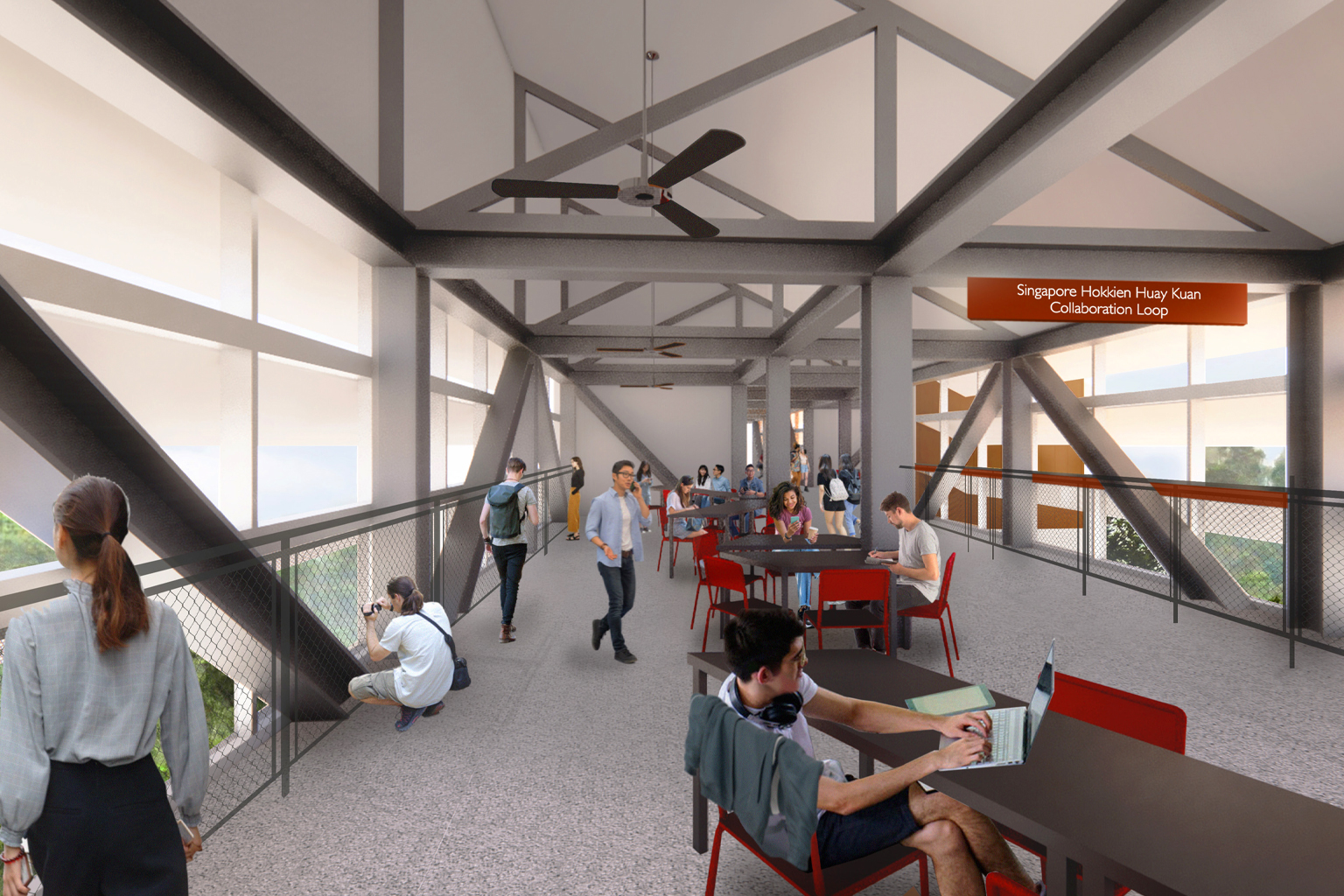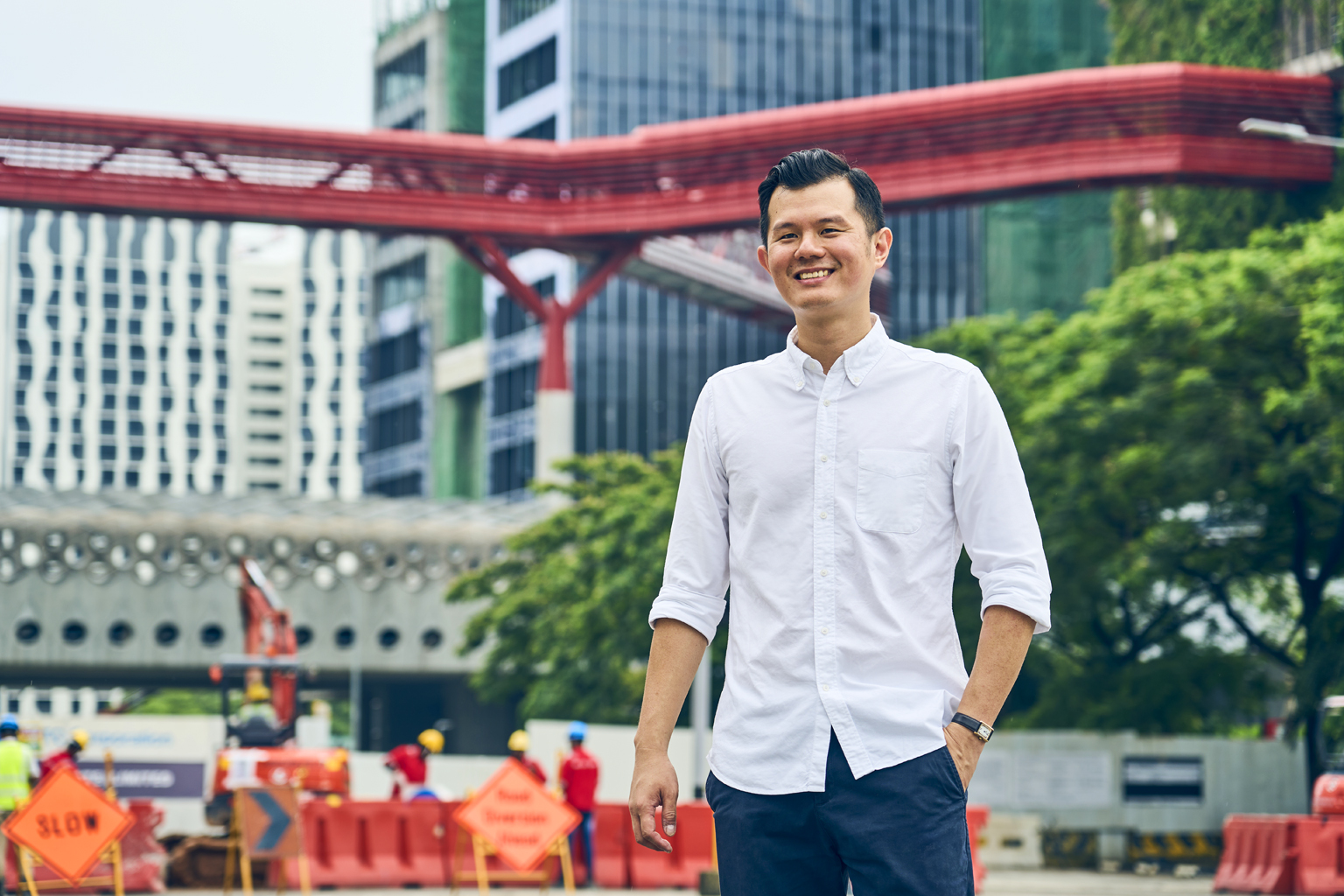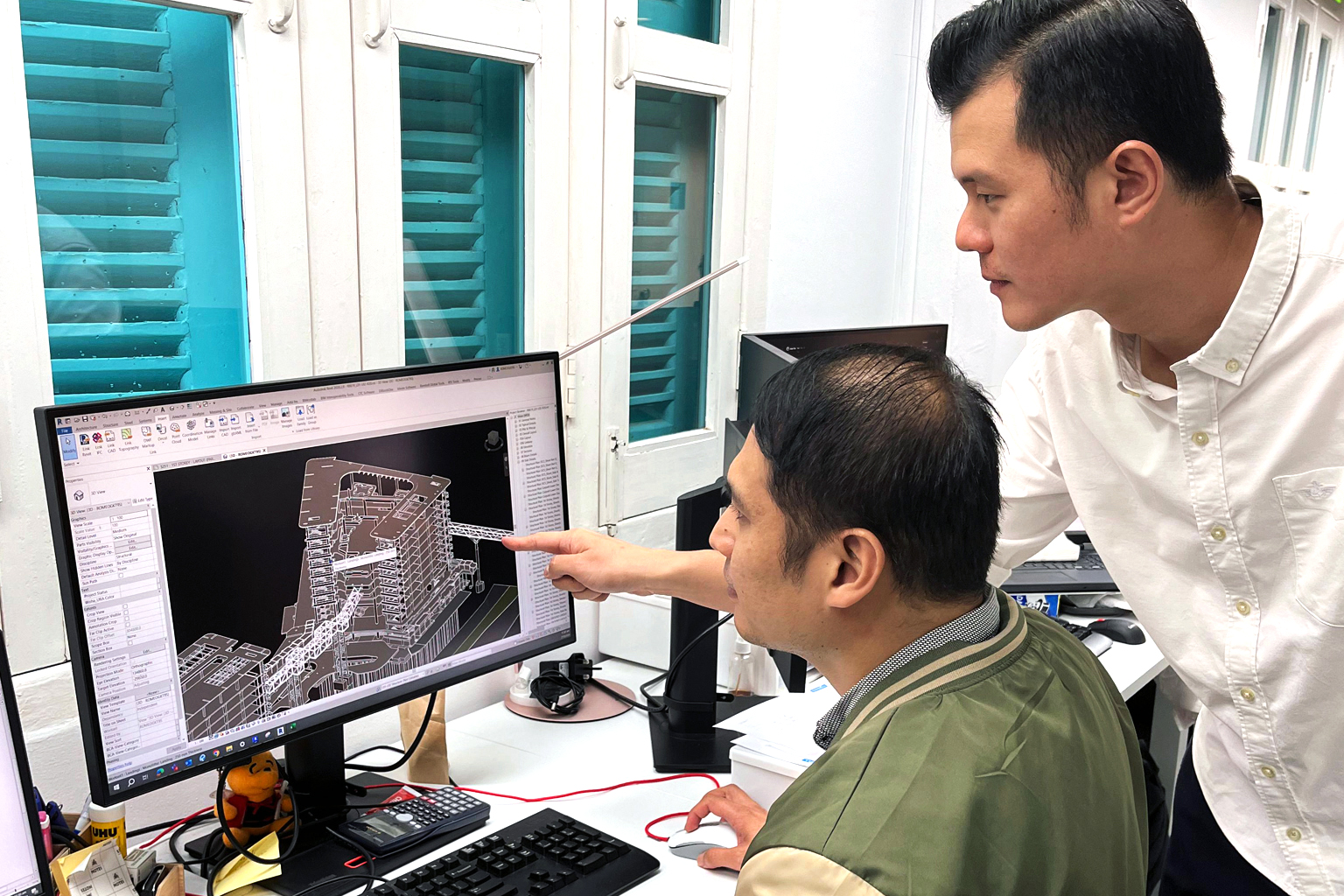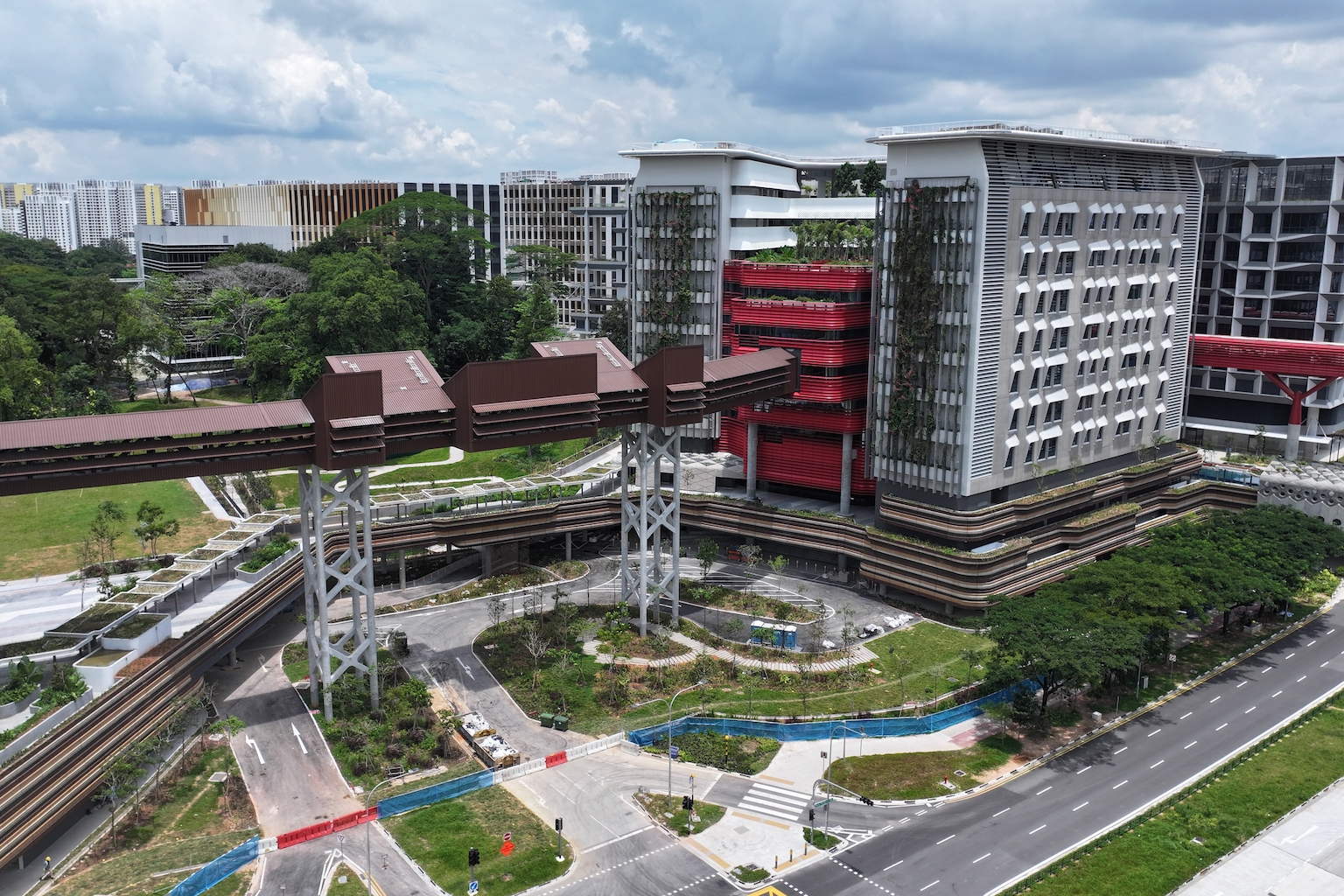BRANDED CONTENT
Creative engineering: How a giant 2km loop bridges new university campus, industry and community in Punggol
Employing innovative ways to overcome unique construction challenges, the architectural and engineering teams build a connected city in Punggol that enables collaboration among its denizens

Ramboll structural engineer Wong Foo Cheong (left) and Woha Architects director Alina Yeo played key roles in designing the new Singapore Institute of Technology campus in Punggol Digital District. PHOTO: SPH MEDIA
Follow topic:
What if your university campus offers you more than just a chance to attend lectures and tutorials? What if you also get to mingle with researchers and industry experts, providing you with an opportunity to learn from the best, beyond academia, in the different disciplines?
Thanks to its smart campus design, undergraduates and educators at the Singapore Institute of Technology’s (SIT) new campus in Punggol Digital District (PDD) will enjoy such privileges.
They will get the opportunity to work closely – both in terms of collaborations and proximity – with their “neighbours”.

The aptly named Collaboration Loop is a mid-level network of corridors and bridges spanning the entire campus and connecting to the neighbouring PDD, a JTC Corporation business park. More than just a structure connecting Point A to Point B, it is a linkway that aims to bring the people at PDD and SIT together, fostering deeper friendships, greater learning, hands-on experience and fruitful partnerships.
Learn how engineers and architects brought a collaborative new campus to life.
Punggol Digital District was master-planned and developed by JTC, while the SIT Punggol campus was developed by SIT. Woha was the master plan designer and lead consultant in the planning and construction of the district and the Campus Heart, including key architectural features such as the 2km-long Collaboration Loop. Ms Alina Yeo, 44, a director at Woha Architects, says: “It’s not only the campus’ circulation route or spine.
“But it also offers beautiful views of nature and naturally ventilated social nodes, such as study pods and indoor amphitheatres, to encourage students and staff to hang out between and after classes.”
SIT’s Collaboration Loop echoes Singapore's broader strategic push towards creating a smart, sustainable and innovative city in which urban designs focus on people and their well-being.

Building a bridge that breaks barriers
Mr Wong Foo Cheong, 38, a structural engineer at architecture, engineering and consultancy firm Ramboll, which translated Woha’s plans into buildable and safe structures and oversaw the campus’ construction, explains that the loop is a breakthrough in design and construction in Singapore’s built environment.
A 124m-long bridge, linking SIT's campus to JTC’s business park, is the centrepiece of the Collaboration Loop, and showcases innovative solutions to construction challenges.
Usually, the builder would have built scaffolding from the ground up to erect the bridge. But the area beneath the bridge belonged to another construction project and was not accessible. In this case, the contractor took the bridge’s segments to a smaller space on the side of the intended final position, hoisted them up and manoeuvred them into place from there.
The longest of the eight pieces that needed to be hoisted spanned 40m and weighed 110 tonnes. To reduce the number of hoists needed and also to make sure that the bridge’s segments were safe to lift, Mr Wong says: “We used a special low-bed trailer to transport the segments to the site, and two independently operated cranes to lift each piece to a height of 18m, much higher than that of a standard overhead pedestrian bridge in Singapore.”
The two crane operators worked in tandem carefully, coordinating lifting work at night, navigating limited visibility and tight spaces. Strong lighting ensured workers' safety, while walkie-talkie guidance facilitated precise movements around building corners, all to avoid construction activity in the daytime.

To put the bridge together in midair without any hitches, the team tapped advanced manufacturing, fabricating the segments off-site to achieve the exact specified dimensions, down to the size of the bolt holes. This approach increased speed, productivity and efficiency, enabling seamless construction in the air.
“You cannot have anything that is crooked, defected or deformed, or the pieces will not line up when you try to fit them,” Mr Wong explains. To ensure smooth assembly on-site, the team did a trial fitting of all the pieces in the factory before transporting them.
He says: “Every step in creating the bridge, from design to fabrication to installation, came with its own set of challenges, so we were all delighted, relieved and excited when we finally saw it up in the air.
“Many parts of the university’s design are unique and require creative engineering. This is why engineering is about being inventive and imaginative, too.”
Revolutionising construction with DfMA
What it is
Design for Manufacturing and Assembly (DfMA) is a construction approach that involves designing structures and components for efficient off-site manufacturing in a controlled environment. These prefabricated elements are then transported and assembled on-site, enhancing overall project efficiency.
DfMA comprises a continuum of various technologies that promote off-site fabrication across the structural, architectural, as well as mechanical, electrical and plumbing (MEP) disciplines.
What its benefits are
Key benefits of adopting DfMA include:
Shorter construction period: Prefabricating components off-site and minimising on-site assembly accelerates the overall construction schedule.
Improved workmanship: Components are produced in a controlled factory environment with stringent quality-assurance measures, which enhances the consistency and reliability of construction.
Reduced on-site disruption: Less construction work on-site means decreased noise, traffic and overall disruption to the surrounding community.
Improved workmanship: Components are produced in a controlled factory environment with stringent quality-assurance measures, which enhances the consistency and reliability of construction.
Reduced on-site disruption: Less construction work on-site means decreased noise, traffic and overall disruption to the surrounding community.
Did you know?
NEWater water transfer pump modules were implemented at Punggol Digital District using Prefabricated MEP Systems.
Integrating MEP components and equipment into a sub-assembly off-site streamlines on-site installation.
There are generally three types of Prefabricated MEP modules: horizontal ceiling module, vertical riser module and plant module, depending on the location of the services.

Connecting with the community
Such forward planning, problem solving and innovation came to the fore in the work for other parts of the campus. SIT's engagement of Woha from the early planning stages enabled iterative design optimisation that enabled the team to pre-emptively address potential construction and maintenance issues.
Woha and Ramboll used Building Information Modelling (BIM) software to develop and coordinate 3D models of their designs.
Mr Wong explains: “You can superimpose the architectural model from architects, structural model from structural engineers, building services model from mechanical, electrical and plumbing engineers, and more. This will allow you to see where the designs clash and fix these problems before construction.”
He adds that the 3D models in BIM are especially useful for unusual or intricate designs – such as for the SIT campus’ irregular floor plan and trapezoidal library block – that may be difficult to understand from 2D drawings.
He says: “You can also zoom in on any section and see all the details, which minimises discrepancies during construction. All of this helps to prevent complications down the line, and improve productivity.”

The use of BIM represents a key element of digitalisation efforts as part of the Built Environment Industry Transformation Map (ITM).
Updated in 2022, the Built Environment ITM guides stakeholders in the sector on how to collaborate more effectively with one another, from planning and design to construction to operations and maintenance. Digitalisation through the use of technology is a key aspect as is integrated planning and design.
To that end, the SIT campus stands out in many ways. Its design not only fosters integration with the wider PDD, but also demonstrates the deep consideration and original thinking needed to boost liveability and sustainability across Singapore’s built environment, to enhance people’s quality of life.
Ms Yeo highlights: “Unlike traditional campuses where buildings go up and down in height, the SIT campus has a technical height control limit, so we flipped the design. All buildings go up to the same level in height, but the ground level is porous and interesting.”
Designing a campus around sustainability and community
The new Singapore Institute of Technology campus sports innovative features, such as a uniform roof level to maximise solar panel efficiency, community spaces within its public pedestrianised ground levels, as well as infrastructure and vehicle networks within its subterranean spaces

Tapping energy from the sun: The uniform rooftop maximises space for installation of solar panels. The 10,000 sq m of solar panels are expected to generate sufficient energy to meet 4 per cent of the campus’ needs.
Open spaces for collaboration: An open and spacious sheltered amphitheatre on the ground level of the Campus Heart – occupying about 1,500 sq m and with a 13.5m-high ceiling – encourages communal activities and collaborations.
Car-lite zones: Most of the vehicular traffic in the car-lite district is moved underground, making the ground level of the campus safer for students to navigate on foot and allowing for lush landscaping on the pedestrianised levels.
Creative engineering below ground: Substantial excavation was required due to the undulating terrain across the Campus Heart. Secant bored piles – intersecting columns that form strong and water-tight walls – were used so that excavation could be carried out smoothly.
Close to nature: The existing Punggol Road is being transformed into a 1.3-km-long pedestrianised heritage trail that runs through the Campus Heart and links Punggol Waterway Park to the Punggol Promenade Park Connector.
The increased space at the ground level also gives the campus a more open feel and enables it to integrate seamlessly with PDD. Ms Yeo says: “The university is a fenceless development, accessible to the public who can come in and be a part of it.” It also has an array of community spaces for all to enjoy, such as the sheltered amphitheatre and open Campus Green.
Furthermore, SIT has incorporated lecture theatres on the first two levels – which are open to the public – that can be leased out for talks and seminars. Mr Gerry Wee, SIT’s associate vice president of estates who was involved in the campus’ planning, says: “We can also hold science and technology workshops for the community.”
He adds that the campus’ design points to how new developments in Singapore can be merged into and harmonised with their surroundings, for a better built environment. Mr Wee adds: “Through our design, we’ve integrated our campus with the district around us, not just physically but socially too, by engaging with industry and the public. Our campus is part of the community, and vice versa.”
Building Singapore is a five-part series featuring the people behind the nation's built environment sector who are transforming the urban landscape. Get an inside look at how they are creating more liveable, sustainable and vibrant spaces for Singaporeans to live, work and play in. This feature is the fourth in the series.


